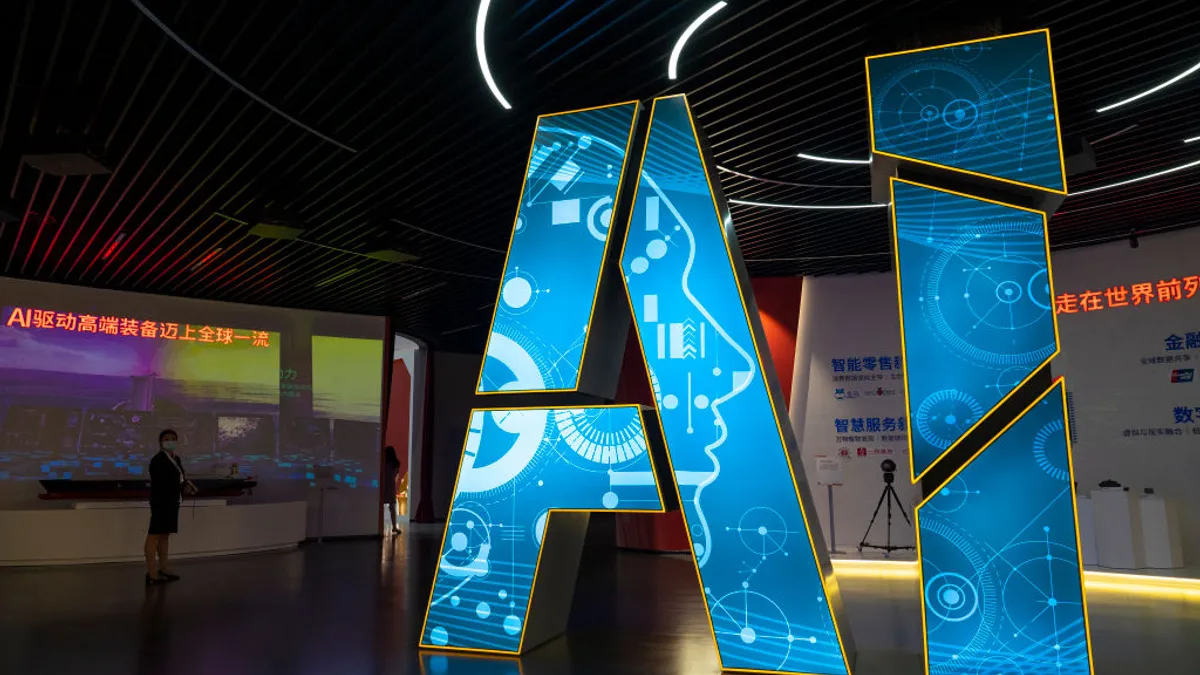Women, particularly women of color, have seen disproportionate job losses driven by the coronavirus pandemic — in a year when employers promised to improve their diversity practices.
"We are in a moment of true crisis," Romy Newman, president and co-founder of Fairygodboss, said during a Feb. 10 webinar. Black women and Latinas have seen disproportionate, personal impacts from the pandemic and while employers are responding with robust recruiting efforts, only 54% of respondents to a recent Fairgodboss survey said they have "specific, tangible" diversity hiring goals for 2021.
Importantly, women and job seekers from historically underrepresented backgrounds are seeking jobs based on different criteria, Newman said — which means the one-size-fits-all platforms and approaches may not fit employers' plans to improve diverse hiring. Employers instead need to take a "targeted" approach. But how?
What's happening now
Investments in diversity hiring have largely been in unconscious bias training and gender-neutral job descriptions, according to the study. Compensation audits and interview audits were the next most invested resources.
But being vocal about those efforts may be particularly important, Newman said. Women were 1.5 times more likely than men to make a decision based on an employer's stance on gender and racial equality, and Black women were two times more likely to do so. Another key aspect of employer branding, according to the survey? Communicating flexible work benefits and policies during the recruitment stage.
The work goes beyond job ads, the webinar presenters noted. If only one woman or historically underrepresented minority makes it onto an interviewing slate, that person will "always be eliminated," Newman said. "What you need is adequate representation on your slate itself." But only 24% of organizations surveyed said they have diversity requirements for candidate slates, while less than half said they ensure their interviewing panels are diverse.
Institutional bias is difficult and entrenched, something that can be witnessed even in tools like LinkedIn, the presenters said. According to the survey, women are half as likely to find a job on LinkedIn compared to men.
"I think LinkedIn is a phenomenal tool, but I think our offline bias is transferring onto the LinkedIn platform," Newman said. Candidates that don't self-promote as well are not seen as often, she added, "and women are significantly less likely to promote. The resume bias we've known about for 30 years is just moving online."
Get support from leadership
"Unless you have the decision makers, the senior leadership, in support of it, then it is going to be an uphill battle," Jennifer Tardy, a diversity recruitment expert and consultant, said during the webinar. "If you're looking for a place to start, it's starting with the business case among the senior leadership team." A true diversity movement can't start with talent acquisition as the initiators, she said; company leadership must be the ones who lead the charge.
"Diversity recruitment is only a small piece" of diversity at any organization and "needs to come under a larger umbrella" of D&I, Tardy said. Real metrics can help set "real, specific" goals for employers to rise to the challenge — and help establish a starting line, the presenters noted. Recruiters without data, for example, won't know where a company is underrepresenting certain groups or what full representation will look like.
"You have to understand your starting line and get very specific on where you are as a company," Tardy said.
Ask the right questions internally
For many talent teams, the first question may regard who makes up professional networks and why that might be, Tardy said.
"When we think about who is in our personal networks and how many of those individuals identify as a Black woman, you begin to see where the problem starts," she said. Women who are finding these jobs are finding them through the "hidden job market": the jobs that aren't posted and are instead found through networks. That means recruiters have to focus on expanding their personal networks to include more women of color, especially, to shape who has access to that hidden job market.
The big name job boards, including Indeed and LinkedIn, may be "overrepresented" in certain groups so, to reach their goals, recruiters can instead attend events and post on job boards where Black women are overrepresented, for example, Tardy said.
Employers also need to ask the Black women in their workforces about their experiences at work, Tardy noted — but employers need to be cautious. "If an organization does this incorrectly, it can lead to people feeling like tokens to do this work," Tardy says. "But if you have the right people leading this initiative saying ‘we recognize we are underrepresented, we want to be well-represented with Black women in this organization,'" Tardy said — and those people are properly incentivized to do it — that strategy can find success.
Prioritize accountability
Recruiters aren't the decision makers; hiring managers are. But recruiters and hiring managers are a team both accountable for increasing diversity in an organization, Tardy said. And on that team, each should know who is accountable for what. Recruiters, for example, are responsible for improving the diversity of the candidate pool because they aren't involved in the final candidate decision, while hiring managers are accountable for who ends up getting hired.
Hiring managers can also "partner with recruiters as a resource," Tardy said. But that means recruiters may have a responsibility to "lean in" when they recognize issues in the hiring process that only they may see — a difficult demand when recruiters also have to be "easy to work with," Tardy said. How do you balance that?
"It is a difficult thing to say to a hiring manager, especially if they are several levels above you, ‘hey, I noticed that of the last seven people who came in to interview, only two people passed your interview, and they happened to be white men, and the other five who didn't pass, they were people of color,'" Tardy said. But hiring managers have a responsibility to ensure their recruiters feel empowered to bring these concerns.
This teamwork can be further encouraged if the organization is incentivizing hiring managers to drive diversity, Newman said.
"If employers want a quick win for increasing diversity at their companies, tie it to the leaders' performance bonuses," Tardy said. Any change an employer wants to make, she added, should be baked into the performance review process.
Focus on training
The most successful companies at improving diversity, equity and inclusion programs train front-line teams — but not just on how to perform complex searches on job boards. The front line needs training on language, Tardy said, including which terms are appropriate.
"Having the right language to use, that is a foundational reason why people on the front line aren't engaged in this," she said. "They're afraid to say the wrong things."
Recruiters and hiring managers also may need training in "how we got here" regarding the push for better diversity and its context to recruiting. "I share with people often [that] the hiring process as it was created centuries ago is doing exactly what it was created to do," Tardy said. "It was created so that men who were white were able to get the most powerful positions and at the cost of people who didn't fit that bill, to keep them behind."
Some organizations may not yet have the appetite for diversity initiatives, Tardy said — but that is why she said "calling people in" versus "calling people" out can ensure a message isn't lost. Calling someone in means asking more questions to get to the heart of how change can be made.




















